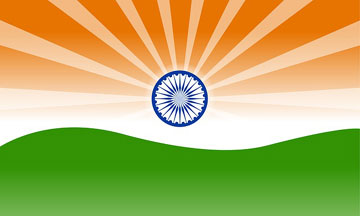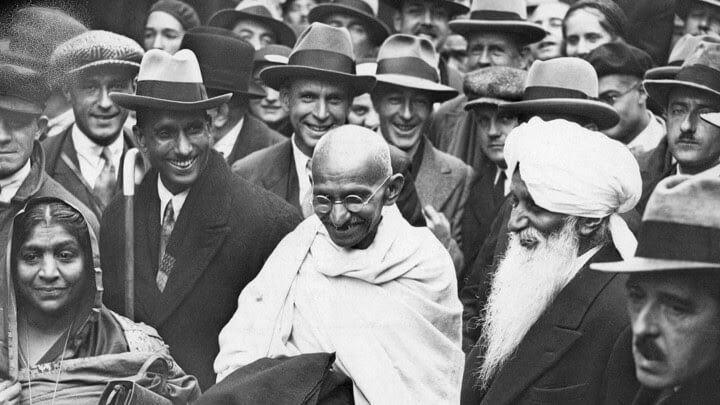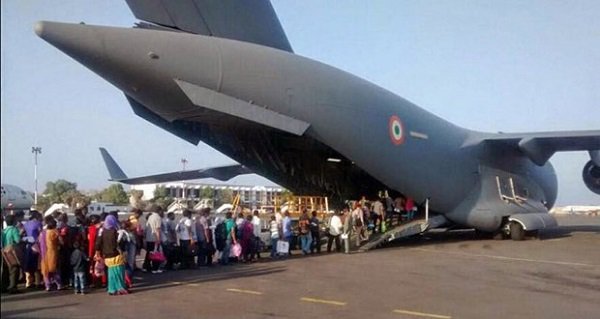
Context
- Indian Diaspora is a generic term used for addressing people who have migrated from the territories that are currently within the borders of India.
- From Google CEO to Nobel laureate scientist Har Gobind Khorana, the list of Indians abroad and their contribution to the world goes endlessly.
- According to the UN, in 2019 Indians comprised the world’s largest migrant diaspora populations in the world with over 17.5 million Indians (6.4% of global migrants) out of total 272 million migrants worldwide
- The recent gathering of the Indian-American community in Houston has proved to be a special moment in India’s diaspora diplomacy.
Historical perspective
- The incorporation of the British Empire in India can be linked to the existence of modern Indian Diaspora all over the world.
- Dating back to the nineteenth century, Indian indentured labor was taken over to the British colonies in different parts of the world.
- In the post World War II period, most of the Indian labor and professionals got scattered and it was a worldwide phenomenon.
- The reconstruction of Europe after the war was provided by Indians and other South Asians, particularly in the United Kingdom and Netherlands.
- Most recently, Indians have made their presence visibly felt in professions in countries like the United States, Canada, and Australia.
Major sections of Indian Diaspora
a. Indians in the Gulf
- Around 8.5 million Indians live and work in the Gulf countries, one of the largest concentrations of migrants in the world.
- The geographical and historical proximity of the Arabian Peninsula to India makes it a convenient destination for Indians.
- Today migrants from across India are working and living in the Gulf countries (Saudi Arabia, UAE, Qatar, Bahrain, Oman, and Kuwait).
b. Indians in USA
- The US, the world’s fourth-largest country with four different time zones — saw a 7 percent increase in arrivals from India in July 2019, and that is bound to increase.
- In recent decades the population has grown substantially, with 2.4 million Indian immigrants resident in the United States as of 2015.
- This makes the foreign-born from India the second-largest immigrant group in the US after Mexicans.
Categorizing Indian’s abroad
- Overseas Indians, officially known as Non-resident Indians (NRIs) or Persons of Indian Origin (PIOs), are people of Indian birth, descent or origin who live outside the Republic of India.
- Overseas Indians are various individuals or ethnic groups associated with India, usually through ancestry, ethnicity, nationality, citizenship or other affiliation and live abroad overseas.
- According to a Ministry of External Affairs report, there were 30,995,729 NRIs and PIOs residing outside India as of December 2018.
1. Non-Resident Indian (NRI)
- Strictly asserting non-resident refers only to the tax status of a person who, as per section 6 of the Income-tax Act of 1961, has not resided in India for a specified period for the purposes of the Act.
- The rates of income tax are different for persons who are “resident in India” and for NRIs.
- For the purposes of the IT Act, “residence in India” requires stay in India of at least 182 days in a financial year or 365 days spread out over four consecutive years and at least 60 days in that year.
- According to the act, any Indian citizen who does not meet the criteria as a “resident of India” is a non-resident of India and is treated as NRI for paying income tax.
2. Person of Indian Origin (PIO)
Person of Indian Origin (PIO) means a foreign citizen (except a national of Pakistan, Afghanistan, Bangladesh, China, Iran, Bhutan, Sri Lanka and/or Nepal), who:
- at any time held an Indian passport OR
- either of their parents/grandparents/great-grandparents were born and permanently resident in India as defined in GoI Act, 1935 and other territories that became part of India thereafter provided neither was at any time a citizen of any of the aforesaid countries OR
- is a spouse of a citizen of India or a PIO.
3. Overseas Citizenship of India (OCI)
- After multiple efforts by leaders across the Indian political spectrum, a pseudo-citizenship scheme was established, the “Overseas Citizenship of India”, commonly referred to as the OCI card.
- The Constitution of India does not permit full dual citizenship.
- The OCI card is effectively a long-term visa, with restrictions on voting rights and government jobs.
- An OCI is however entitled to some benefits such as a multiple-entry, multi-purpose life-long visa to visit India.
- They are exempted from police reporting for any length of stay in the country.
- They are also granted all rights in parity with NRIs except, the right to acquisition of agricultural or plantation properties.
Significance of Indian diaspora
I. Contribution in freedom struggle

- Mahatma Gandhi’s struggle for ending institutionalized discrimination against Indians in South Africa became an inspiring legend for enduring sentimentalism about the diaspora in modern India.
- The diaspora also became a vehicle for promoting the cause of Indian independence among the political elites of major countries.
- As the independence movement gathered momentum at home, it began to influence many Indian communities abroad.
II. Diaspora as Cultural extension

- The act of migration is not just limited to geographical limits; rather it is a cultural extension.
- Let us take the example of the Sikh community. The Sikhs are one of the largest migrants from India to the UK, Canada and many other countries.
- They have very well maintained their culture and ethnic existence for decades.
III. Remittances

- A remittance is a transfer of money by a foreign worker to an individual in his or her home country.
- Money sent home by migrants is one of the largest financial inflows to developing countries.
- A/c to the World Bank, India retained its position as the world’s top recipient of remittances with its diaspora sending a whopping $79 billion back home in 2018.
- Without these remittances, India’s balance of payment position would have looked worse.
- India is followed by China (USD 67 billion), Mexico (USD 36 billion), the Philippines (USD 34 billion), and Egypt (USD 29 billion).
IV. Diaspora as ‘Agents of change’
- Diaspora acts as ‘agents of change’ facilitating and enhancing investment, accelerating industrial development, and boosting international trade and tourism.
- Diaspora’s motives to invest in India are long-lasting as many of them wish to establish a long-term base in India.
- Another tangible long-term advantage in nurturing ties with an active Diaspora is an accelerated technological sector.
V. Technological development and entrepreneurship

- Another tangible long-term advantage in nurturing ties with an active diaspora is an accelerated technological sector and increased socio-economic development.
- Some examples to illustrate this phenomenon are Bengaluru, Gurugram and Hyderabad as thriving IT hubs that not only house multinational companies (MNCs) but also multiple Indian start-ups.
- The government can further tap this transnational entrepreneurship, including support for entrepreneurs and small businesses in India in the form of knowledge transfers and finances from the diaspora.
VI. Enhancing India’s global say
- India’s permanent membership to the UNSC can become a reality with support from the diaspora.
- According to Article 108 of the Charter, for a UN reform, an affirmative vote from two-thirds of its members and support from the five permanent members is required.
- India has demonstrated its diplomatic influence with the reappointment of Justice Dalveer Bhandari to the International Court of Justice in November 2017, when it secured two-thirds of the votes at the UN.
- Apart from political pressures and ministerial and diplomatic level lobbying, India can leverage its diaspora to influence states such as Canada and Mexico to support India’s membership
Most Importantly,
VII. Diaspora diplomacy

- A less tangible but important advantage in having a large immigrant group is “diaspora diplomacy” .
- Historically, India has benefitted from its diaspora.
- Two instances stand out: lobbying for the US-India Civilian Nuclear Agreement Bill in 2008 and their remittance inflow.
- The recent engagement of PM Modi in Houston is a continuation of his extraordinary political investment in engaging the Indian diaspora.
- It is based on the recognition that a large and very successful diaspora has widened India’s footprint and can contribute to the achievement of India’s domestic and international goals.
India’s engagement with Diaspora: A policy-wise perspective
- Many of the themes of India’s contemporary diaspora policy had their origins in the approach of the Indian national movement before independence.
- Concern for the treatment of Indian indentured labor around the world became an important part of the rise of the national movement in the early 20th century and the formation of its international consciousness.
- The nationalist backlash against the Indian communities in Africa and Asia in the 1950s and 1960s saw Delhi consciously distance itself from the diasporic communities.
- As India turned inwards, Delhi also took a dim view of the “brain drain” as many well-trained Indians began to look for opportunities elsewhere.
- It was only in the late 1980s that Delhi began to rethink its approach to the diaspora.
Change in recent years
- PM Rajiv Gandhi was the first to appreciate the potential role diaspora could play in advancing national development and improving India’s ties with the US.
- As he launched the reform era, P V Narasimha Rao sought investments from the diaspora.
Vajpayee Era
- The NDA government that ruled India between 1998 and 2004 had additional ideological and cultural reasons to emphasize the importance of the diaspora.
- Atal Bihari Vajpayee saw the long-term strategic value of the engagement when he called for a ‘partnership among all children of Mother India so that our country can emerge as a major global player’.
- He constituted a committee in 2000 under the leadership of L.M. Singhvi, an MP, to suggest a variety of policy initiatives to strengthen the bonds with the overseas Indian communities.
- The committee’s recommendations led to the initiation of what we now know as Pravasi Bharatiya Divas and the formation of a separate Ministry for Overseas Indians.
- Other suggestions covered important cultural, educational and social subjects forming the basis of some innovative initiatives like the Know India Programme (KIP) and Study India Programme (SIP) .
- These have engaged the youth living abroad and the Tracing the Roots Scheme, through which some Indians have been able to trace their roots in India.
The Modi era
- With coming to power, PM Modi has discarded the old attitude of reproaching the diaspora, especially that in the West, for abandoning their responsibility to their motherland by leaving its shores.
- Instead, he has affirmed that India is proud of the diaspora’s achievements around the world.
- He exhorted them to actively contribute to the acceleration of India’s economic and social development.
- Modi has also recognized that the connection with the diaspora could be leveraged to influence the political classes of the host nations.
- Relaxing the visa norms for the overseas communities, improving physical connectivity and the ease of doing business in India have been the policy consequences of Modi’s more intensive outreach to the diaspora.
Various policy initiatives
Education
- NRI seats are reserved in all the medical, engineering and other professional colleges.
- Other youth-centric outreach programs include scholarships to pursue undergraduate courses in recognized UGC universities in India, as well as Bharat Ko Jano online quizzes.
Voting rights
- The Representation of the People (Amendment) Bill 2017 the provision would help non-resident Indians (NRIs) to participate in the electoral process.
- It extends the facility of ‘proxy voting’ to overseas Indians, on the lines of service voters.
Know India Program (KIP)
- It is a flagship initiative for Diaspora engagement which familiarizes Indian-origin youth (18-30 years) with their Indian roots and contemporary India has been refashioned.
Minimum Referral Wages (MRW).
- A number of policies were announced keeping in mind the protection of welfare and interest of Indians abroad; for example, the 2014 Minimum Referral Wages (MRW).
Easing the passport facility
- The last three years saw the launch of Head Post Offices as passport centers enabling thousands more to apply for a passport.
Pravasi Bharatiya Divas
- In the many Pravasi Bharatiya Divas (PBD) that have been organized since he became PM, Modi has been keen on wooing the diaspora.
Engagement comes with responsibilities

- Indian communities abroad are not merely ‘strategic assets’ that Delhi can leverage at will. They also bring significant responsibilities.
- The diaspora expects that India will stand by them in their hour of need.
- Indian citizens abroad, who have traveled at their own risk, demand greater protection and support from Delhi when they are caught in difficult situations.
- On several occasions in recent years, Delhi has had to spend millions of dollars on the protection and evacuation of Indian citizens from crisis zones.
- These crises have become recurrent thanks to the profound turbulence in the Middle East that is home to one of the largest concentrations of Indians abroad.
Challenges faced by Diaspora
I. Racial antagonism

- Rising incidence of hate speech and crimes against Indians by the locals due to racism, communalism emboldened by coming of nationalist and ultra-nationalist governments to power in many countries.
Protectionism

- Increasing anti-globalization: Fear of losing jobs and educational opportunities to outsiders has resulted in stricter visa rules in many countries including the USA, Australia, etc.
Terrorism

- Sectarian crisis, increasing terrorist activities and war in the Middle East countries (Yemen, Oman, Libya, Syria etc) leave our diaspora vulnerable to attacks.
Supporting Indians abroad
- India needs both additional resources as well as better systems to deal with the recurring challenges of supporting citizens abroad.
The resources front
- There is no escaping the fact that India needs more officers and staff on the ground in its embassies abroad and at headquarters for dealing with the expanding consular work.
- It makes sense, therefore, to set up a well-staffed permanent mechanism, say a center for consular protection, with representation of all stakeholders under the aegis of the MEA.
- Three important functions present themselves to this new mechanism. The first relates to information collection and dissemination.
- The government needs more comprehensive and reliable data on the movement of Indians across national borders.
- Effective tracking is critical for understanding the broad patterns and changes within them over time, identifying potential problems and offering better services.
- Delhi must ensure that Indian workers get mandatory briefings on local conditions and risks in their specific destinations as well as their rights vis-a-vis the Indian government.
Ensuring security abroad
- The second relates to the codification of India’s rich experience in evacuating Indian citizens abroad.
- So far there have been 26 Indian evacuation operations between 1947 and 2003.
- But there has been no real effort within the government to study this experience, draw appropriate lessons and build a more secure foundation for protecting Indian citizens abroad.
- The new mechanism can draft and circulate to all key departments at the Centre and in relevant states, comprehensive reports on how each crisis was dealt with and the lessons learned.
Are we overtly relying on our Diaspora?
- PM Modi’s recent visit to the US has showcased some of the emerging problems with India’s diaspora diplomacy.
I. India’s domestic political fault-lines
- As in India, so in the US, many liberal sections of the diaspora have become sharply critical of the Modi government.
- Together, they are having an impact on the leadership of the diaspora, including some US Congress members of Indian origin, as well as the general public discourse within the US on India.
II. Lack of mainstreaming and consolidation
- Support of the diaspora is neither automatic nor continuous, and their interests need not be India’s priorities.
- For example, the Indian community in the US was not vocal enough in criticizing Trump’s proposal to restrict the H-1B visa program that has benefited many Indians.
- Another challenge is that remittances may not always be used for beneficial purposes.
- For instance, India faced problems due to foreign funding for extremist movements like the Khalistan movement.
- Moreover, the diaspora is unfair in expecting India to stand by them at all times of need. This contradictory attitude of the diaspora and the Indian government will need to be worked out.
III. Getting drawn too deep into the domestic politics of the US
- The Houston event reflects the growing weight and prestige of the Indian community in the US as well as Trump’s own electoral calculus for the elections next year.
- While the Indian-American community tends to lean towards the Democratic Party, Trump might be betting that the celebration of the India-US partnership with Modi might let him make a dent in the community.
IV. Fear of Political Polarization
- While addressing the diaspora, India should be careful about not crossing some red lines.
- China, for example, is getting into trouble in many countries for turning its relationship with the diaspora into an active intervention in the domestic politics of the host nation.
- Given the current polarization of US domestic politics and the profound hostility towards Trump among the Democrats, Delhi has to be careful not to be seen as tilting in favor of one side.
V. Diaspora as a threat
- It must be remembered that having a strong diaspora does not always translate to benefits for the home country.
- India has had problems with negative campaigning and foreign funding, coming from abroad, for separatist movements like the Khalistan movement.
- In the backdrop of Canadian PM Justin Trudeau’s visit to India in February 2018, multiple media outlets carried articles on the strongest support for the Khalistan movement.
- The Indian government, while continuing to engage with the diaspora as a part of its foreign policy, will have to be cautious of these sensitive issues that may impact the security of the state.
Way Forward
- From being a largely inconsequential country after Independence, in part due to its active Non-Alignment Policy, India is today seen as a strong nation headed by a strong leader.
- India has enjoyed being viewed more favorably by the world since 2014, and the diaspora can further these perceptions.
- As much of India’s foreign policy aims to translate partnerships to benefits for key projects like Swachh Bharat, Clean Ganga, Make In India, Digital India, and Skill India, the diaspora has plenty of scope to contribute.
- The diaspora can step up and act as Indian ‘ambassadors’, as it is insufficient and ineffective for a country or its missions abroad to rely only on press releases to change public opinion.
- The diaspora can provide the requisite strategic impulse, which makes it all the more important to unlock their potential.
- While they certainly do not determine policy, they can effectively shape it and act as “bridge-builders” between their home and adopted countries.
- The present government is right in their focus on the diaspora as they are a strategic asset to India.
References:
https://www.orfonline.org/research/the-diaspora-and-indias-growth-story/
https://archive.india.gov.in/overseas/diaspora/nri.php
